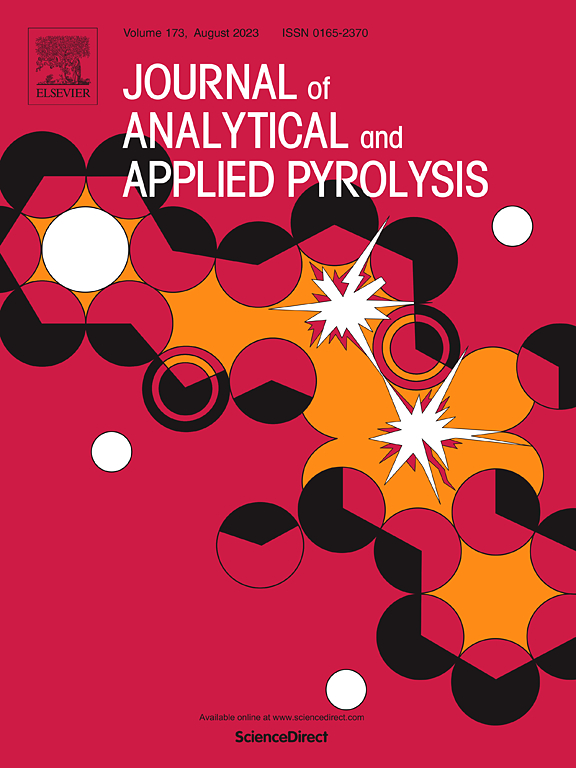Preparation of a finely dispersion nickel-based in-situ pyrolysis catalyst: Influence of lignocellulosic constituents
IF 5.8
2区 化学
Q1 CHEMISTRY, ANALYTICAL
引用次数: 0
Abstract
Metal/biochar catalysts could be synthesized via directly subjecting biomass impregnated with metal salts to pyrolysis. The properties of biochar are intricately linked to the inherent composition of the raw material, which in turn could influence the degree of metal dispersion and its catalytic impact. The poplar sawdust and its fractioned proportion was employed for the preparation of Ni-based biochar catalysts. The work mainly focuses on the impact of lignocellulosic material with diverse compositions on the dispersion of nickel particles during the calcination-pyrolysis co-process. Given that cellulose and holocellulose constituted the majority of the material, the matching catalyst support may encourage the migration of nickel species to produce substantial amounts of particles, perhaps as a result of several reactions such as dehydration and aromatization. In contrast, the utilization of sawdust as a support demonstrated a remarkable effect in dispersing nickel particles, nickel particle size and H2 uptake were 7.0 nm and 19.8 μmol/g, respectively, while also displaying exceptional catalytic activity in the hydrogenation of vanillin, with the maximum conversion and 2-methoxy-4-methylphenol (MMP) yield of 99.7 % and 69.0 %. It has been determined that the presence of lignin in the system has a beneficial impact on the dispersion of nickel and its catalytic activity.
精细分散镍基原位热解催化剂的制备:木质纤维素成分的影响
金属/生物炭催化剂可通过直接将浸渍金属盐的生物质进行热解而合成。生物炭的特性与原料的固有成分密切相关,而原料的固有成分又会影响金属的分散程度及其催化作用。杨木锯屑及其分馏比例被用于制备镍基生物炭催化剂。这项工作主要关注不同成分的木质纤维素材料在煅烧-热解共处理过程中对镍颗粒分散的影响。鉴于纤维素和全纤维素占材料的大部分,匹配的催化剂载体可能会促进镍物种的迁移,从而产生大量颗粒,这可能是脱水和芳香化等若干反应的结果。相比之下,利用锯末作为载体在分散镍颗粒方面效果显著,镍颗粒大小和吸收 H2 的能力分别为 7.0 nm 和 19.8 μmol/g,同时在香兰素氢化过程中也表现出卓越的催化活性,最大转化率和 2-甲氧基-4-甲基苯酚(MMP)产率分别为 99.7 % 和 69.0 %。研究确定,体系中木质素的存在对镍的分散及其催化活性具有有利影响。
本文章由计算机程序翻译,如有差异,请以英文原文为准。
求助全文
约1分钟内获得全文
求助全文
来源期刊
CiteScore
9.10
自引率
11.70%
发文量
340
审稿时长
44 days
期刊介绍:
The Journal of Analytical and Applied Pyrolysis (JAAP) is devoted to the publication of papers dealing with innovative applications of pyrolysis processes, the characterization of products related to pyrolysis reactions, and investigations of reaction mechanism. To be considered by JAAP, a manuscript should present significant progress in these topics. The novelty must be satisfactorily argued in the cover letter. A manuscript with a cover letter to the editor not addressing the novelty is likely to be rejected without review.

 求助内容:
求助内容: 应助结果提醒方式:
应助结果提醒方式:


